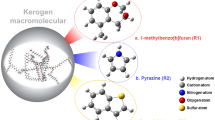Abstract
The mechanism of reaction Cl2+2HBr=2HCl+Br2 has been carefully investigated with density functional theory (DFT) at B3LYP/6-311G** level. A series of three-centred and four-centred transition states have been obtained. The activation energy (138.96 and 147.24 kJ/mol, respectively) of two bimolecular elementary reactions Cl2+HBr→HCl+BrCl and BrCl+HBr→HCl+Br2 is smaller than the dissociation energy of Cl2, HBr and BrCl, indicating that it is favorable for the title reaction occurring in the bimolecular form. The reaction has been applied to the chemical engineering process of recycling Br2 from HBr. Gaseous Cl2 directly reacts with HBr gas, which produces gaseous mixtures containing Br2, and liquid Br2 and HCl are obtained by cooling the mixtures and further separated by absorption with CCl4. The recovery percentage of Br2 is more than 96%, and the Cl2 remaining in liquid Br2 is less than 3.0%. The paper provides a good example of solving the difficult problem in chemical engineering with basic theory.
Similar content being viewed by others
References
Goldfinger, P., Noyes, R. M., Wen, W. Y., The gas phase chlorine plus hydrogen bromide reaction, A bimolecular reaction of diatomic molecules, J. Am. Chem. Soc., 1969, 91: 4003–4004.
Wen, W. Y., Noyes, R. M., Reactions of halogens with hydrogen halides studies in the Cl2+HBr system, Int. J. Chem. Ki-net., 1974, 6(1): 29–37.
Baer, M., Collinear quantum mechanical treatment of the heavy-light-heavy mass combination: Cl+HBr→HCl+Br, J. Chem. Phys., 1975, 62(1): 305–307.
Garrett, B. C., Abusalbi, N., Koun, D. J., Test of variational transition state theory and the least-action approximation for multidimensional tunneling probabilities against accurate quantal rate constants for a collinear reaction involving tunneling into an excited state, J. Chem. Phys., 1985, 83(5): 2252–2258.
Bian, W. S., Ju, G. Z., Deng, C. H., Studies on the reactions Cl+HBr, Cl+DBr, Br+HI and Br+DI with the variaional transition-state theory, Chinese J. Chem. Phys., 1993, 16(6): 496–502.
Cohen, M. J., Willetts, A., Handy, N. C., Reaction rates of HBr+Cl=Br+HCl using semiclassical transition state theory, Chem. Phys. Lett., 1994, 223: 459–464.
Last, I., Baer, M., Three-dimensional DIM-3C potential energy surfaces for the reactions H+XY and X+HY(X,Y=F, Cl, Br, I), J. Chem. Phys., 1984, 80(7): 3246–3252.
Yasushi, O., Ohgi, T., Osamu, K.,Ab initio MO study of structure and stability of heteronuclear trihalide anions X2Y- (X, Y=Cl, Br, or I) in the gas phase and in solution, Theochem., 1998, 429: 187–196.
Liu, Z. H., Recycling bromine directly from synthesized aromatic bromide, Dye Industry, 1991, 28(2): 15–17.
Schubert, P., Mahajan, S., Recover bromine on site, Chemistry Technology, 1993, 23(4): 37–41.
Wang, Z. Y., Xiao, H. M., The comparative investigation of the structure and property of halogen and halide with density function theory methods, J. Molecular Science, 2000, 16(4): 267–272.
Wan, Z. Y., Chen, Z. X., Xiao, H. M. et al., A study on the mechanism of the reaction F2+2HCl→2HF+Cl2 using density functional theory, Acta Chimica Sinica, 2000, 58(3): 267–272.
Becke, A. D., Density-functional thermochemistry, III. The role of exact exchange, J. Chem. Phys., 1993, 98: 5648–5652.
Lee, C., Yang, W., Parr, R. G., Development of the Colle-Salvetti correlation-energy formula into a functional of the electron density, Phys. Rev., 1988, B37: 785–789.
Frisch, M. J., Trucks, G. W., Schlegel, H. B. et al., Gaussian 98, Pittsburgh PA: Gaussian, Inc., 1998.
Hahre, W. J., Radom, L., Schleyer, P. V. R. et al.,Ab Initio Molecular Orbital Theory, New York: Wiley, 1986.
Simons, J., Jorgensen, P., Taylor, H. et al., Walking on potential energy surfaces, J. Phys. Chem., 1983, 87: 2745–2747.
Cerjan, C. J., Miller, W. H., On finding transition states, J. Chem. Phys., 1981, 75: 2800–2804.
Bannerjee, A., Adams, N., Simons, J. et al., Search for stationary points on surfaces, J. Phys. Chem., 1985, 89: 52–56.
Wan, Z. Y., Studies on the Mechanisms of the Reactions of Halogen and Halogen and of Halogen and Hydrogen Halogen with Density Funtional Theory (DFT), Ph. D. Thesis, Nanjing University of Science and Technology, Nanjing, 2000.
Tianjin Chemical Institute, Handbook of Inorganic Salt Industry, Beijing: Chemical Industry Press, 1979.
Yang, C. S., Wan, Z. Y., Xiao, H. M., Studies on new technology for recycling bromine with CCl4 extraction, J. Nanjing Univ. Sci. & Tech., 1999, 27(5): 35–37.
Author information
Authors and Affiliations
Corresponding author
Rights and permissions
About this article
Cite this article
Xiao, H., Wang, Z., Xiao, J. et al. Investigation on the mechanism and applications of the reaction Cl2+2HBr=2HCl+Br2 . Sc. China Ser. B-Chem. 44, 283–293 (2001). https://doi.org/10.1007/BF02879619
Received:
Issue Date:
DOI: https://doi.org/10.1007/BF02879619




